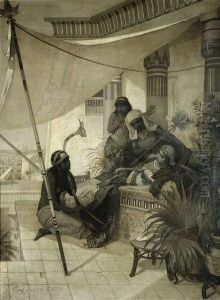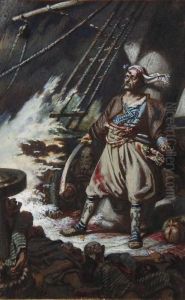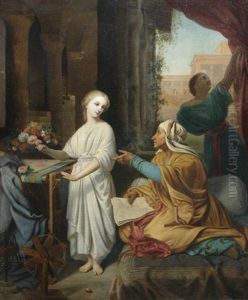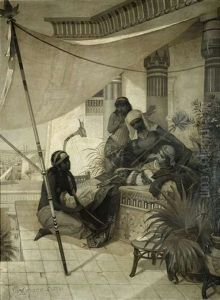Philipp Grotjohann Paintings
Philipp Grotjohann was a German painter and illustrator known for his detailed historical and genre scenes. He was born on December 16, 1841, in Berlin, Germany. Grotjohann demonstrated artistic talent from a young age, which led him to pursue formal education in the arts. He studied at the Prussian Academy of Arts in Berlin, where he honed his skills and developed a strong foundation in the techniques of painting and illustration.
After completing his studies, Grotjohann embarked on a career as a professional artist. He became known for his meticulous attention to detail and his ability to capture the essence of historical moments. His works often depicted scenes from medieval and Renaissance periods, showcasing his interest in European history and his capacity to convey narrative through his art.
Grotjohann's illustrations were also in demand, and he contributed to various publications of his time. This work helped to popularize his name and brought his talents to a wider audience. Despite this, he remained more recognized in his homeland and did not achieve the same level of international fame as some of his contemporaries.
Throughout his career, Grotjohann received various commissions for his historical paintings. His works were exhibited in art shows, and he gained the respect of his peers and art critics. However, details about his personal life and the full breadth of his oeuvre remain less documented compared to other artists of the era.
Philipp Grotjohann's life was relatively short, as he passed away on April 1, 1892, in Berlin, at the age of 50. Although he is not as widely known today, his contributions to 19th-century German art are still appreciated by art historians and collectors who seek to understand the rich tapestry of historical painting during that period. His works continue to be of interest in the study of genre and historical painting in the German tradition.



